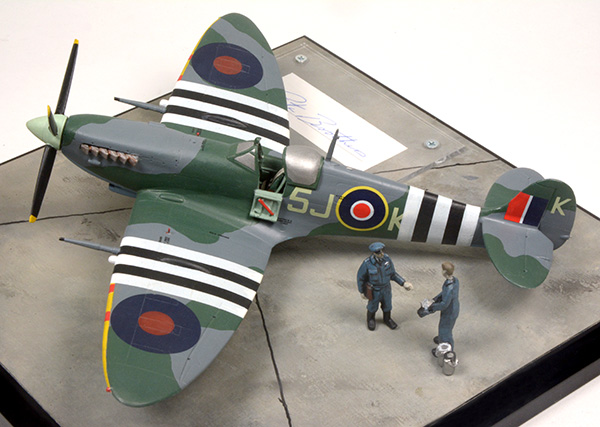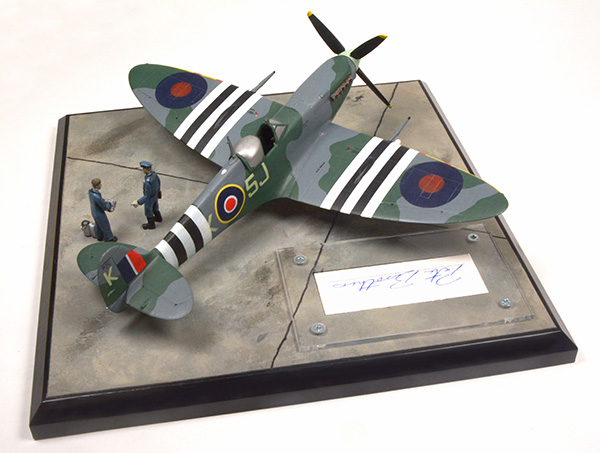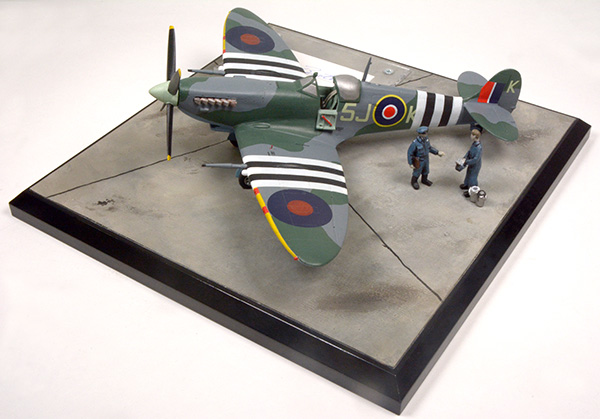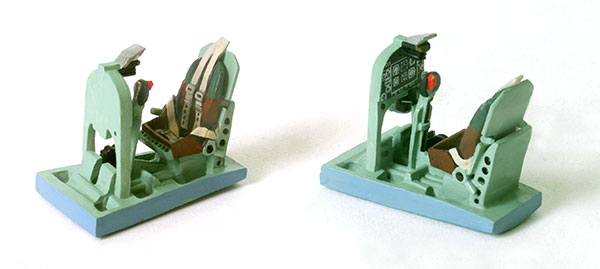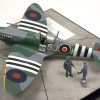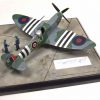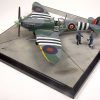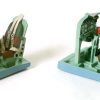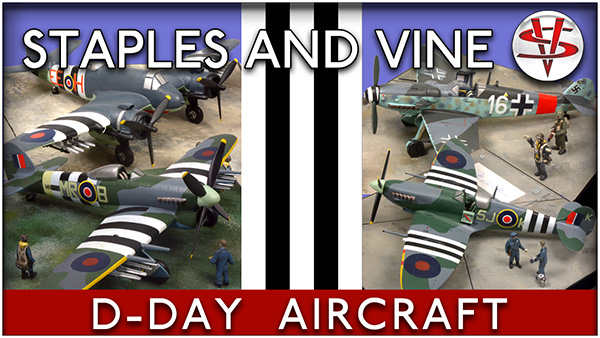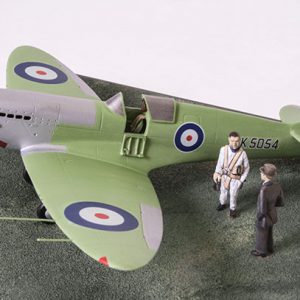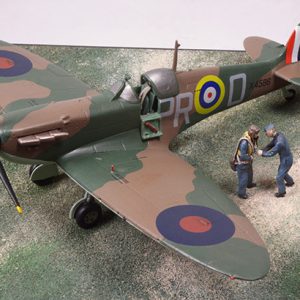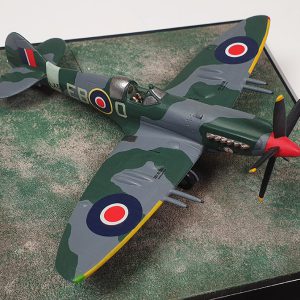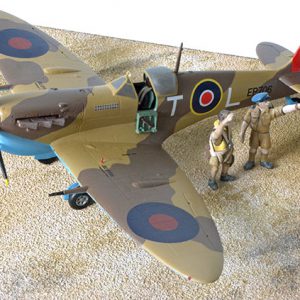Supermarine Spitfire Mk IXC ML214 5J-K 126 Squadron,
Culmhead Wing, June 6th 1944 D-Day.
Signed by Air Commodore Pete Brothers CBE, DSO, DFC*.
FIND OUT MORE ABOUT THE SPITFIRE MK IXC
ON MY YOUTUBE CHANNEL BELOW
Peter Brothers, having already learned to fly aged sixteen, joined the RAF on a short service commission in 1936, and following training joined 32 Squadron at Biggin Hill that October flying the Gloster Gauntlet. By the end of 1938 with the squadron re-equipped with the Hurricane Mk I he was a Flight Commander, and still with 32 claimed his first kill, a Bf 109, on 18 May 1940; he had added eight more, and mix of Bf 109s and Bf 110s and a single Do 17 by the end of August. On 9 September he was both awarded the DFC and posted to 257 Squadron at Debden as a Flight Commander, adding a Do 17 and a Ju 88 to his tally on 15 September. After a spell at 52 OTU as an instructor he returned to operations in June 1941 forming 457 Squadron at Baginton on Spitfires with Australian aircrew, and while with this unit added a Bf 109 and a probable Fw 190. In June he moved to Redhill to command 602 Squadron with which he claimed Fw 190s both destroyed and damaged, and October was posted to Tangmere as Wing Leader, adding another Fw 190 on 26 January 1943 and a bar to his DFC in June. In July he was posted to 61 OTU and in November to HQ 10 Group, during which staff job he added another Fw 190 to his total on 12 January 1944.
In April 1944 he returned to operations as leader of the Exeter wing, which was made up of five squadrons of Spitfires and one of Typhoons spread across four airfields making the Wing unwieldy to manage, so in the preparations for D-Day it was divided, with Wg.Cdr. Bird-Wilson taking on the Harrowbeer Wing and Peter Brothers what was now the Culmhead Wing, with three Spitfire squadrons including 126. He destroyed anther Fw 190 on 7 August, and with post D-Day operations moving further away from Culmhead he was posted away in October. He was awarded the DSO in November, and went to the Command and General Staff School at Fort Leavenworth in Kansas, in the last months of the war to the Central Fighter Establishment at Tangmere. After VE-Day he was involved in interviewing many of the Luftwaffe pilots who had been his opponents, and he was one of many Fighter Command veterans who took part in the first Battle of Britain flypast over London in September 1945.
He left the RAF in 1947 to join the Colonial service, but returned in 1949, this time to Bomber Command where he took command of 57 Squadron at Waddington with Lincolns; he took them to Singapore in 1950 for four months, the first bomber squadron to take part in the Malayan campaign, moving to Marham when they re-equipped with Washingtons. He went on to the V-Force, as Wing Commander Flying at Marham in the late 1950s with Valiants; he was promoted to Group Captain in 1959, serving in senior staff posts, and as an Air Commodore he was AOC Military Air Traffic Operations, retiring as Director of Public Relations (RAF) in April 1973.
The Mark IX Spitfire originated as an interim solution to a pressing problem, and became the most produced mark (over five and a half thousand). With the introduction of the Focke-Wulf Fw 190, in particular to cross-Channel operations, the comparative performance of the Spitfire V suffered, and its planned successor the Mark VIII was still under development; however the next generation of Rolls-Royce Merlin, the 60 series, was available and this was fitted to the Mark V airframe, the only visual difference being a slightly longer nose; the new emgine gave an increase in performance which at least narrowed the gap between the two aircraft significantly. As with the Mark V two basic wing layouts with differing armament arrangements were available to the IX, with the choice reflected in the aircraft designation; in the “c” wing two 20 mm. cannon were inboard of the four .303” machine guns, and with the “e” wing the cannon was moved to the outboard position with the inner now housing a .50 machine gun. With many of the Mark IXs used in low-level operations, both defensive and offensive, many of them had “clipped” wings but this was not reflected in the designation.
On 6 June 1944 the Culmhead Wing was made up of 126 Squadron with Spitfire IXs and 131 and 616 Squadrons, both with Spitfire VIIs. The wing was under the control of 10 Group of the Air Defence of Great Britain, whose title defined its responsibility, and which covered the South-West of England with 11 Group looking after the South-East; their squadrons were available to the Allied Expeditionary Air Forces ML214 was with No.6 MU on 25 April 1944, and joined 126 Squadron on 7 May, spending all its operational RAF service with this squadron. On 10 October it had a Cat.B flying accident, and needed further repair work the following February by Air Service Training Exeter. On 14 August 1946 it was passed to the French air force, with whom it served with Groupe de Chasse 1/3.
As with all allied aircraft to be flown in the Normandy invasion operations ML214 was painted with the black and white “Distinctive Markings”, known ever since as “D-Day stripes”. As always with such widespread and hasty applications there were variations, and those of Air Defence of Great Britain aircraft were frequently narrower that those “standard” stripes worn by 2 TAF aircraft. By the end of 1944 these stripes had been shed stage by stage, until by the end of October aircraft had reverted to their original colours; on ML214 the identifying “K” remained on the rudder where it had been applied when the stripes had partially obscured those on the rear fuselage. 214 became the aircraft of Sqn.Ldr. Johnny Plagis when he took over the squadron shortly after D-Day, but he changed it for NH293 “E” in October following its accident.


